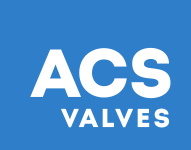-
A.
Capacity is the volume of material your rotary valve can handle per rotation. The calculation involves the rate of conveying, material bulk density, valve efficiency, and RPM of your rotor. We can help you with the math, but if you're just looking for a valve sizing recommendation, you can use our handy calculator tool.
Relevant for: Conveying Systems, Technical Support -
A.
Sometimes the rotation of the rotor is reduced due to an overload of material, or larger pieces of material being fed through the valve, jamming in the clearances. In this case, shear pin sprockets will shear the pin on the sprocket, reducing the risk of damage to the rotor.
-
A.
Too much clearance between the rotor, endplates and or housing can result in air loss. Measure the rotor to endplate and rotor to housing clearances to confirm that they are an NFPA compliant 0.0079 inches. If the clearance is larger than this, it might be time to replace your rotor, rotary valve, or have it sent back to ACS for a repair or evaluation. Make sure to stick to a maintenance schedule and check your clearances at least every three months.
-
A.
The capped pipe is called a housing vent port. Rotor pockets can sometimes contain a volume of pressured air, which can impede material flow into the airlock inlet, reducing your efficiency. Also, in conveying systems that run at 6 PSI and higher, large releases of air up the return side of the airlock can cause pulsing in the material flow into the conveying line. Using a vent helps solve both of these issues, and is also helpful in improving your fill efficiency.
-
A.
Shear protectors reduce the flow of material at the valve's inlet. Reduced flow allows for better pocket fill and also reduces the risk of product jams in your housing clearances–ultimately protecting your product from damage.
FAQs - Conveying Systems
Can’t figure out why your machinery isn’t performing? Want some info on how to replace your shaft seal? Need someone to scratch your nose for you while you work? Check out our user manuals, tech support videos, articles, and FAQ’s below, or call our Tech Support, Paul, for more help.
Support Line
905 765 2004Browse tech support:
